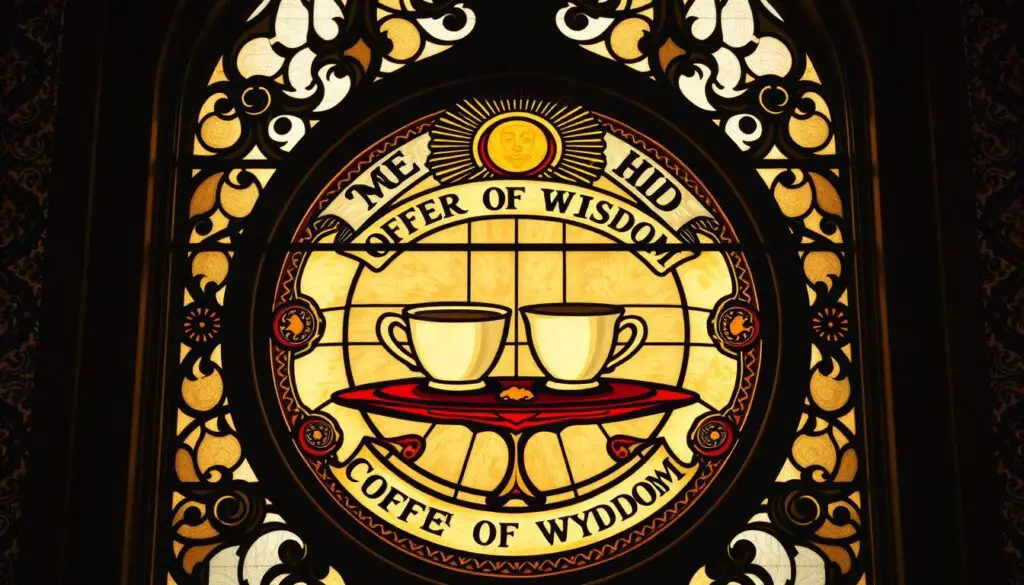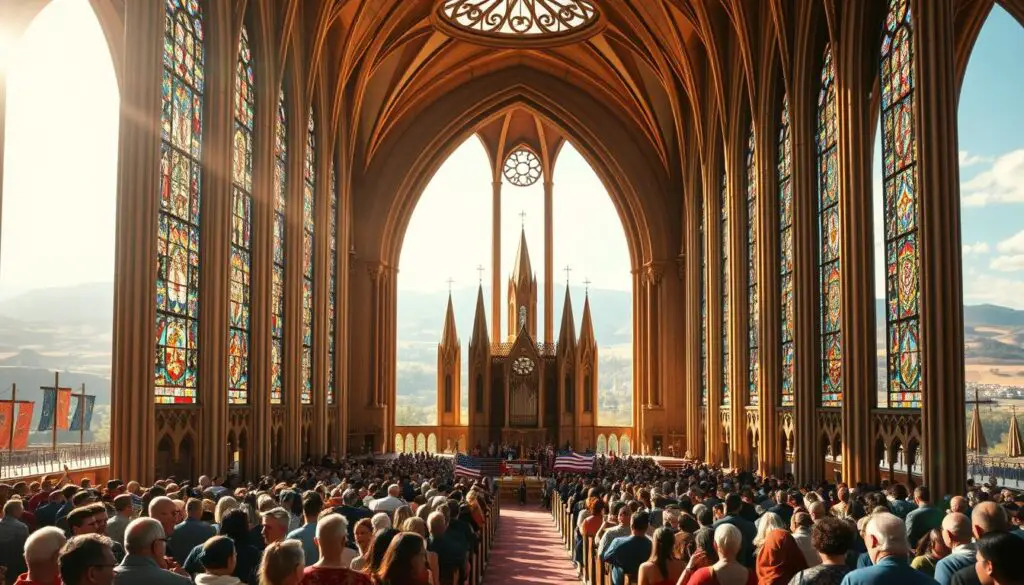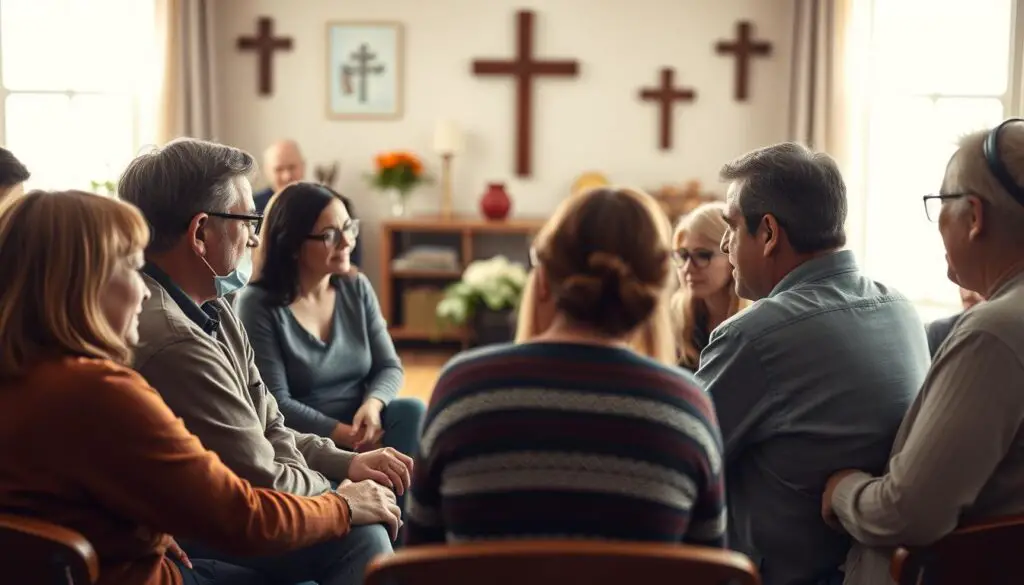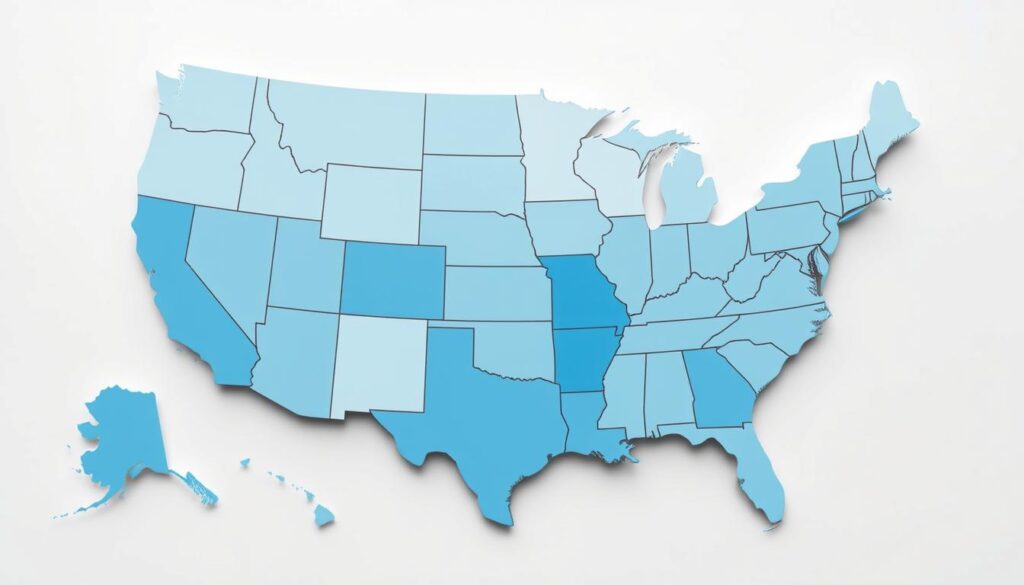For members of The Church of Jesus Christ of Latter-day Saints, lifestyle choices often reflect spiritual principles. One of the most well-known guidelines is the Word of Wisdom, a health code rooted in divine revelation. Received by Joseph Smith in 1833, this teaching emphasizes caring for the body as a sacred responsibility.
Originally part of the Doctrine and Covenants, the revelation advises against substances like alcohol and tobacco. It also specifically mentions avoiding hot drinks, which leaders later clarified as coffee and tea. This practice isn’t just about tradition—it’s tied to both physical health and spiritual discipline.
Today, adherence to these principles remains a hallmark of Latter-day Saint life. Many members believe abstaining from certain beverages fosters clarity and obedience to God’s commandments. The guidelines also encourage wholesome eating habits, benefiting families and communities alike.
Understanding this topic requires looking at history, theology, and modern interpretations. Let’s explore how these teachings evolved and why they continue to shape daily choices for millions.
Key Takeaways
- The Word of Wisdom originated as a revelation to Joseph Smith in 1833.
- It promotes physical health and spiritual well-being for church members.
- Coffee and tea are avoided based on historical interpretations of “hot drinks.”
- Guidelines are found in the Doctrine and Covenants, a core religious text.
- Modern adherence reflects both tradition and personal commitment.
Introduction to Mormon Hot Drinks
Central to Latter-day Saint culture is a health code known as the Word of Wisdom, shaping daily habits and beliefs. This divine counsel, received by Joseph Smith in 1833, emphasizes caring for the body as a sacred trust. It’s more than a set of restrictions—it’s a guide for balanced living tied to spiritual growth.
The term “hot drinks” first appeared in early church teachings, later clarified as coffee and tea. These beverages remain avoided today, reflecting both historical practice and modern commitment. Members of The Church of Jesus Christ of Latter-day Saints view this choice as a way to honor their bodies and align with divine principles.
Beyond coffee and tea, the Word of Wisdom also advises against alcohol and tobacco. Many find these guidelines foster healthier lifestyles while strengthening community bonds. As one member noted, “It’s not about missing out—it’s about gaining clarity and purpose.”
| Prohibited Beverages | Permitted Alternatives | Key Reasoning |
|---|---|---|
| Coffee & Tea | Herbal Infusions | Historical interpretation of “hot drinks” |
| Alcohol | Sparkling Juices | Promotes physical and spiritual well-being |
| Tobacco | — | Linked to health risks and addiction |
Recorded in the Doctrine and Covenants, these teachings continue to evolve while staying rooted in revelation. Upcoming sections will explore how early practices shaped today’s standards and why millions find meaning in this lifestyle.
Historical Overview of the Word of Wisdom
In 1833, a transformative teaching emerged through Joseph Smith, founder of The Church of Jesus Christ of Latter-day Saints. Known as the Word of Wisdom, this revelation addressed health principles during a time when stimulants like coffee and tea were widely consumed. Originally recorded in Doctrine and Covenants 89, it encouraged moderation rather than strict prohibition.
Early church members understood “hot drinks” to mean beverages served at boiling temperatures. Historical minutes show leaders like Hyrum Smith teaching that this term specifically referred to coffee tea. Over years, interpretations solidified as prophets emphasized avoiding these substances entirely.
The initial guidance focused on wisdom rather than commandment. Many 19th-century members consumed mild beers or herbal teas occasionally. By the early 1900s, however, adherence became a requirement for temple participation. This shift reflected growing emphasis on spiritual discipline within the church community.
| Period | Focus | Beverage Approach | Key Influence |
|---|---|---|---|
| 1833-1900s | Moderation | Gradual reduction | Local leaders |
| Post-1900s | Abstention | Clear prohibitions | Centralized authority |
Brigham Young and other prophets played pivotal roles in shaping these standards. Their teachings connected physical habits to spiritual readiness, creating lasting traditions for Latter-day Saints. Today, millions view these practices as essential to their faith and health.
The Revelation of Joseph Smith and the Word of Wisdom
In February 1833, Joseph Smith received a spiritual directive that reshaped daily habits for millions. This revelation, now found in Doctrine and Covenants 89, introduced principles emphasizing both physical vitality and spiritual alignment. Early drafts described it as “adapted to the capacity of the weak,” encouraging gradual adoption.
Hyrum Smith, Joseph’s brother, later clarified that “hot drinks” meant coffee and tea during an 1842 sermon. His teachings reinforced abstinence from these beverages as part of honoring one’s body. Church records show leaders like Brigham Young echoing this view, calling them “unwise for the stomach.”
The text itself avoids explicit bans but advises against substances that harm the body. For example:
- “Hot drinks are not for the body or belly” (D&C 89:9)
- “All wholesome herbs God hath ordained for the constitution of man” (D&C 89:10)
This guidance evolved from suggestion to expectation as church leaders linked obedience with spiritual readiness. By the 1920s, adherence became a temple recommend requirement—a practice still upheld today. Members often describe this lifestyle as fostering clarity in decision-making and community unity.
| Key Element | Scriptural Reference | Modern Application |
|---|---|---|
| Avoiding stimulants | D&C 89:9 | No coffee/tea consumption |
| Emphasis on herbs | D&C 89:10-11 | Herbal teas permitted |
| Promised blessings | D&C 89:18-21 | Health and spiritual focus |
Historical journals reveal many early members substituted coffee with roasted grain beverages. This adaptability shows how principles from the Word of Wisdom merged tradition with practical living—a balance still cherished.
Defining “Hot Drinks” in Mormon Doctrine
Clarity around beverage guidelines in The Church of Jesus Christ of Latter-day Saints stems from careful scriptural interpretation. The Word of Wisdom in Doctrine and Covenants 89 identifies “hot drinks” as a category to avoid. Early leaders like Hyrum Smith clarified this term refers specifically to coffee and tea, a definition upheld for nearly two centuries.
This distinction appears in historical sermons and modern church publications. Herbal infusions, hot chocolate, and grain-based beverages aren’t included—only drinks brewed from coffee beans or tea leaves. Leaders emphasize this isn’t about temperature but the substances themselves.
| Prohibited | Permitted | Reason |
|---|---|---|
| Black/Green Tea | Chamomile Tea | Plant source matters |
| Espresso | Hot Cider | Avoiding specific stimulants |
| Iced Coffee | Herbal Blends | Consistency in principle |
Current teachings reaffirm these boundaries while encouraging members to focus on overall health. As one church manual states, “Obedience to this revelation demonstrates trust in divine wisdom.” The guidelines align with broader commandments about respecting the body as a sacred gift.
This clarity helps families make informed choices. Parents often teach children why certain beverages are avoided while exploring tasty alternatives. Through consistent practice, these definitions remain central to Latter-day Saint identity and spiritual growth.
Interpreting Coffee and Tea in Early Church History
Early leaders played a crucial role in defining beverage standards for Latter-day Saints. Their teachings laid the foundation for modern practices tied to the Word of Wisdom. Two figures stand out: Hyrum Smith and Brigham Young, whose interpretations shaped generations.
Hyrum Smith’s Teachings on Hot Drinks
Hyrum Smith, brother of Joseph Smith, delivered a landmark sermon in 1842. He plainly stated that “hot drinks” meant coffee and tea. This clarification appeared in church publications, settling debates among early members. His message emphasized spiritual discipline over cultural habits of the time.
Brigham Young’s Discourse on Beverage Choices
Brigham Young expanded these ideas as church president. He urged members to avoid stimulants, calling them “injurious to both body and spirit.” Historical journals show he linked obedience to blessings, creating a culture of intentional living. His teachings influenced policies still followed today.
The Doctrine and Covenants provided scriptural backing for these guidelines. Leaders often cited verse 89:9, which warns against substances harming the body. Over years, these interpretations became central to temple worship and community health standards.
| Leader | Key Teaching | Impact |
|---|---|---|
| Hyrum Smith | Defined coffee/tea as prohibited | Unified early practices |
| Brigham Young | Connected habits to spiritual readiness | Strengthened long-term adherence |
These early voices still resonate. Many families teach children about avoiding coffee using stories from church history. As one member shared, “Knowing the ‘why’ behind these choices makes them meaningful.”
The Significance of Coffee and Tea Restrictions
Understanding beverage choices in the LDS faith requires exploring spiritual and practical reasoning. The Word of Wisdom positions avoiding coffee and tea as acts of obedience, not mere preference. Doctrine and Covenants 89:9 states these substances “are not for the body,” linking physical care to divine purpose.

Early leaders like Brigham Young taught that abstaining fosters self-mastery—a principle extending to alcohol and tobacco avoidance. This unified approach helps members view their bodies as temples requiring protection. Modern adherents often note improved energy levels and mental clarity when following these guidelines.
Scriptural promises in D&C 89:18-20 reinforce this practice, offering blessings of health and “wisdom.” Many find these verses motivate long-term commitment despite cultural pressures. As one church manual explains, “Discipline in small choices prepares us for greater spiritual challenges.”
| Substance | Spiritual Impact | Health Consideration |
|---|---|---|
| Coffee | Focus on agency | Reduces caffeine dependence |
| Tea | Symbol of commitment | Encourages herbal alternatives |
| Alcohol | Clarity in decisions | Lowers disease risks |
Historical records show early members substituting roasted grains for coffee, demonstrating adaptability within boundaries. Today, this tradition continues with creative recipes for caffeine-free drinks. Through consistent practice, these restrictions remain a living expression of faith for millions worldwide.
Modern Interpretations and Church Clarifications
In today’s fast-paced world, The Church of Jesus Christ of Latter-day Saints continues to uphold the Word of Wisdom while addressing modern beverage trends. Recent statements from church leaders reaffirm traditional boundaries while offering clarity on contemporary questions. For example, a 2019 official declaration specified that all coffee-based drinks—including lattes and cold brew—remain prohibited, regardless of temperature or preparation method.
Communication channels like General Conference talks and the Gospel Library app help members stay informed. These resources emphasize that avoiding coffee and tea isn’t about legalism but aligning with divine guidance. As Elder Ronald A. Rasband taught, “Obedience to these principles unlocks spiritual strength and physical resilience.”
Many Latter-day Saints creatively adapt historical practices to modern life. Herbal teas and caffeine-free alternatives remain popular, while debates about energy drinks highlight the focus on intentionality rather than strict caffeine bans. The Church’s official website clarifies:
- Espresso and matcha fall under prohibited categories
- Hot chocolate and most herbal infusions are permitted
- Decisions should prioritize spiritual and physical well-being
This balance honors the revelation given to Joseph Smith while respecting individual agency. Members view these guidelines not as restrictions but as tools to enhance their connection to God and community. Through ongoing dialogue, the Word of Wisdom remains a living guide for millions seeking harmony between faith and modern life.
Comparing Early Practices to Today’s Standards
Over time, the application of sacred principles within The Church of Jesus Christ of Latter-day Saints has transformed significantly. Early members interpreted the Word of Wisdom with flexibility—some consumed mild beers or occasional herbal brews. Joseph Smith’s original 1833 revelation emphasized wisdom over rigid rules, as noted in Doctrine and Covenants.
By the early 1900s, leaders shifted focus to complete abstinence. Where pioneers might sip roasted grain substitutes for coffee, modern latter-day saints avoid all forms of prohibited beverages. This evolution reflects deeper spiritual commitments and clearer health understandings.
| Era | Practice | Leadership Influence |
|---|---|---|
| 1833-1900 | Moderation encouraged | Local discretion |
| Post-1900 | Full abstention required | Centralized directives |
Brigham Young once remarked, “Obedience in small things prepares us for greater light.” This philosophy now guides members to view the Word of Wisdom as non-negotiable. Modern handbooks explicitly forbid even trace amounts of tea in flavored drinks—a stark contrast to 19th-century flexibility.
These changes strengthened community health outcomes while deepening spiritual unity. As prophets reinforced standards through conferences and publications, members embraced higher expectations. Today’s practices honor Joseph Smith’s vision while adapting to contemporary needs—proving timeless principles can thrive in modern life.
Health and Spiritual Benefits of the Word of Wisdom
Adherents of the Word of Wisdom discover tangible rewards that extend beyond dietary choices. The Doctrine and Covenants promises “health in the navel and marrow to the bones” (89:18-20), linking physical vitality to spiritual obedience. Members often report fewer chronic illnesses and increased energy levels when avoiding substances like alcohol, tobacco, and caffeine-heavy beverages.
By steering clear of harmful substances, individuals protect their bodies as sacred temples. Studies show lower rates of heart disease and addiction among those following these guidelines. One church member shared, “Choosing herbal teas over coffee helped me sleep better and focus during scripture study.”
| Physical Benefits | Spiritual Benefits |
|---|---|
| Reduced disease risk | Enhanced mental clarity |
| Improved digestion | Stronger self-discipline |
| Longer lifespan | Deeper prayer experiences |
Modern leaders emphasize that this revelation isn’t just about restrictions—it’s a blueprint for holistic well-being. Families teach children early about honoring their bodies, fostering lifelong habits. As Elder David A. Bednar noted, “Obedience in small things prepares us for greater light.”
Communities thrive when members prioritize both health and faithfulness. The Word of Wisdom remains a timeless guide, merging ancient wisdom with contemporary life challenges.
Real Life Perspectives on mormon hot drinks
Daily choices often spark meaningful conversations among members of the Church of Jesus Christ. Sarah, a mother from Utah, shares: “Choosing herbal teas over coffee became easier when I focused on the blessings promised in the Word of Wisdom.” Her experience mirrors many who find creative ways to honor their commitments.
Community gatherings showcase these principles in action. Potluck desserts feature caffeine-free sodas, while youth events highlight fruit-infused water stations. One bishop noted, “These habits build unity—we’re all striving together.”
| Social Setting | Preferred Drinks | Community Impact |
|---|---|---|
| Family Dinners | Sparkling Juices | Inclusive celebrations |
| Church Events | Herbal Blends | Shared values |
| Workplace | Hot Chocolate | Respectful dialogue |
Elder Jeffrey R. Holland once taught, “Small acts of obedience shape our life’s direction.” Many members connect beverage choices to broader spiritual growth. Parents use these moments to teach children about self-mastery and honoring the body.
While cultural norms shift, the Doctrine and Covenants remains a steady guide. As communities adapt, the balance between tradition and modern health awareness continues to strengthen bonds among members worldwide.
Word Wisdom and Dietary Guidelines for Latter-day Saints
The Word of Wisdom in Doctrine and Covenants 89 offers a holistic approach to health, blending spiritual principles with practical nutrition. Beyond avoiding specific substances, it encourages positive habits like eating seasonal produce and whole grains. This balance reflects a timeless vision for physical and spiritual well-being.
- Avoiding coffee, tea, alcohol, and tobacco
- Emphasizing fruits, vegetables, and wholesome herbs
- Consuming meat sparingly
Many Latter-day Saints integrate these teachings through meal planning and family traditions. One member shared, “We focus on colorful salads and homemade breads—it’s about nourishment, not restriction.”
| Prohibited Items | Recommended Foods | Scriptural Basis |
|---|---|---|
| Coffee & Tea | Whole Grains | D&C 89:10-11 |
| Alcohol | Seasonal Fruits | D&C 89:5-7 |
| Tobacco | Vegetables | D&C 89:8 |
These guidelines foster mindfulness in daily choices. Parents often involve children in gardening or cooking to teach stewardship of the body. Modern adaptations include plant-based recipes and hydration-focused habits.
By linking diet to discipleship, the Word of Wisdom remains a living guide. As Elder D. Todd Christofferson taught, “Our bodies deserve respect as instruments of our moral agency.” This principle continues shaping health practices for millions worldwide.
Scholarly and Community Insights
Academic research sheds new light on the historical roots of the Word of Wisdom. By examining doctrinal texts and community dialogues, scholars reveal how interpretations evolved alongside cultural shifts. These insights bridge past principles with modern applications.
Unpacking Historical Texts
Early sermons from Joseph Smith and Hyrum Smith show nuanced views on dietary guidelines. The Doctrine and Covenants initially framed the revelation as advice rather than strict law. University studies highlight how 19th-century health movements influenced early church teachings.
| Era | Key Insight | Source |
|---|---|---|
| 1830s | “Hot drinks” linked to medical beliefs | Brigham Young University archives |
| 1920s | Shift to mandatory adherence | Church handbook revisions |
| 2020s | Focus on holistic wellness | General Conference addresses |
Voices From the Community
Local congregations often discuss balancing tradition with personal conviction. A 2022 roundtable in Utah featured members sharing how avoiding coffee strengthened family bonds. Others emphasized herbal alternatives as both healthy and spiritually meaningful.
Modern church leaders cite academic work to explain doctrinal continuity. For example, Elder Uchtdorf referenced nutritional studies when discussing the Word of Wisdom’s timeless relevance. This blend of scholarship and faith helps members navigate complex choices.
Common Misconceptions about Hot Beverages in Mormonism
Many assume the term “hot drinks” in Latter-day Saint teachings includes any heated beverage. This misunderstanding often leads to questions about hot chocolate, herbal teas, or even soup broths. Historical records and modern church guidance, however, consistently clarify this restriction applies only to coffee and tea.
Hyrum Smith’s 1842 sermon explicitly linked “hot drinks” to coffee and tea, a definition reaffirmed by leaders like Brigham Young. The Doctrine and Covenants emphasizes avoiding substances that harm the body, aligning with early interpretations. Modern handbooks and General Conference addresses maintain this specificity, rejecting broader applications.
| Common Myth | Actual Teaching | Source |
|---|---|---|
| All hot liquids prohibited | Only coffee/tea restricted | Hyrum Smith, 1842 |
| Decaf coffee allowed | All coffee forms avoided | 2019 Church statement |
| Herbal tea forbidden | Herbal infusions permitted | D&C 89:10 |
Misinterpretations sometimes arise from overlooking cultural context. For example, 19th-century members occasionally consumed warm grain drinks as coffee substitutes. Today, such adaptations continue with caffeine-free alternatives, but the core principle remains unchanged.
The Church’s stance stays rooted in revelation rather than shifting trends. As stated in official materials, “Clarity on this matter reflects decades of consistent prophetic counsel.” Understanding this history helps dispel confusion and reinforces the purpose behind these guidelines.
Interplay of Religion, Health, and Culture
The integration of spiritual principles with daily living creates a unique cultural tapestry for members of The Church of Jesus Christ of Latter-day Saints. The Word of Wisdom bridges divine guidance with practical health habits, fostering unity across generations. This code isn’t just about avoiding substances—it’s a shared language of reverence for the body and community.
Religious observance directly shapes dietary choices. By abstaining from coffee and tea, members honor teachings from the Doctrine and Covenants. These practices become cultural markers, visible at gatherings where herbal infusions replace traditional stimulants. One Utah family shares, “Our children learn early that choices reflect our deepest values.”
| Religious Influence | Health Impact | Cultural Significance |
|---|---|---|
| Scriptural obedience | Lower disease risks | Shared identity |
| Temple readiness | Mental clarity | Generational traditions |
| Prophetic counsel | Energy balance | Community bonding |
Modern health trends often align with these timeless principles. Plant-based diets and mindfulness practices mirror the Word of Wisdom’s emphasis on moderation. As Elder Dieter F. Uchtdorf noted, “True discipleship involves caring for both soul and body.”
This interplay strengthens community resilience. Potlucks feature nutrient-rich dishes, while youth programs teach stewardship of physical and spiritual well-being. Through these lived traditions, faith becomes a unifying force in an ever-changing world.
Future Implications and Evolving Interpretations of the Word of Wisdom
As nutritional science advances and cultural values shift, church leaders emphasize the Word of Wisdom remains anchored in divine revelation while allowing room for thoughtful adaptation. This balance between timeless principles and modern understanding keeps the teachings relevant across generations.

Recent statements from prophets highlight this flexibility. Elder Dieter F. Uchtdorf noted, “Truth embraces new light while maintaining eternal foundations.” Current discussions explore how emerging research on gut health or plant-based diets might align with Doctrine and Covenants guidelines about “wholesome herbs.”
| Past Practice | Modern Consideration | Guiding Principle |
|---|---|---|
| Strict coffee avoidance | Examining caffeine sources | Substance over form |
| Meat as occasional food | Plant-forward nutrition | Moderation wisdom |
| Cultural traditions | Global health trends | Universal application |
Community practices already reflect subtle shifts. Younger members often choose herbal infusions over sugary sodas, blending tradition with contemporary health awareness. These choices demonstrate how core commandments adapt to new contexts without compromising spiritual intent.
The Word of Wisdom’s enduring strength lies in its divine origin through Joseph Smith. As one historian observed, “Revelation provides the compass—culture and science suggest the terrain.” This dynamic ensures the teachings remain a living guide rather than a static rulebook.
Conclusion
Guiding principles from the Word of Wisdom continue shaping lives across generations. Originating as a revelation to Joseph Smith in 1833, these teachings blend spiritual commitment with practical health choices. By avoiding substances like coffee and tea, members honor divine counsel while fostering physical vitality.
Historical roots in the Doctrine and Covenants remain central to modern practices. Leaders emphasize that adherence isn’t about restriction but alignment with higher principles. Many find this lifestyle strengthens family bonds and personal discipline.
Promised blessings of clarity and resilience resonate today. As communities adapt to new challenges, the Word of Wisdom offers timeless wisdom. Its balanced approach—rooted in revelation yet adaptable—keeps it relevant in daily life.
For those exploring these teachings, resources from The Church of Jesus Christ of Latter-day Saints provide deeper insights. Ultimately, this code reflects a harmonious vision: caring for the body enriches both faith and well-being.
FAQ
Why do members of the Church of Jesus Christ of Latter-day Saints avoid coffee and tea?
This practice stems from the Word of Wisdom, a health code revealed to Joseph Smith in 1833. Early leaders like Hyrum Smith and Brigham Young taught that “hot drinks” referred to these beverages. Members view adherence as a commitment to spiritual and physical well-being.
Are herbal teas allowed under current guidelines?
Yes, many members consume caffeine-free herbal teas, as they aren’t derived from the tea plant. The restriction primarily applies to black, green, and oolong teas, along with coffee, based on interpretations of early teachings and modern clarifications.
Did the Word of Wisdom always prohibit alcohol and tobacco?
The original text in Doctrine and Covenants 89 advises moderation rather than outright prohibition. Over time, Church leaders emphasized abstaining from alcohol, tobacco, and harmful substances as commandments to align with evolving health understanding and spiritual standards.
How do cultural practices influence members’ beverage choices today?
While doctrine remains consistent, cultural adaptations exist. For example, some families avoid all caffeine, while others focus only on restricted items. Modern prophets encourage personal revelation and adherence to core principles rather than rigid cultural norms.
What health benefits are linked to following these dietary guidelines?
Studies suggest lower rates of heart disease and addiction among active members. The emphasis on whole foods, limited meat, and avoiding harmful substances aligns with many public health recommendations, though spiritual obedience remains the primary focus.
Could the Church’s stance on beverages change in the future?
Doctrine remains rooted in revelation, but practical applications may evolve. For instance, energy drinks weren’t addressed historically but are now cautioned against by leaders. Members are encouraged to seek guidance through prayer and current teachings.
How do scholars interpret historical debates about “hot drinks”?
Researchers note that 19th-century medical beliefs influenced early interpretations. Documents from figures like Brigham Young show concerns about digestive health, while modern analysis emphasizes holistic stewardship of the body as a divine gift.







